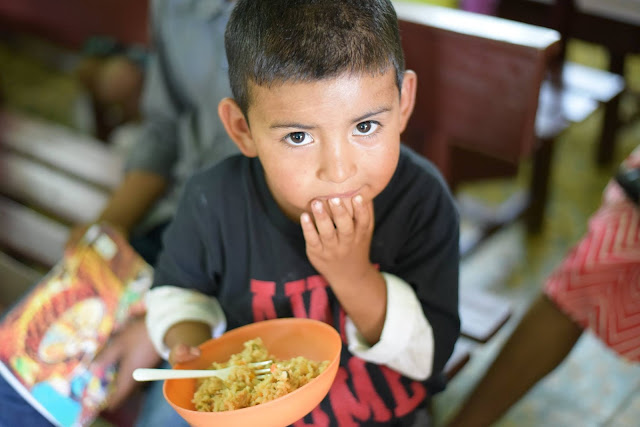(This post is part of a series on S4P's mission statement. Here's a link to introduce you to the series.)
Get out your paper and some colored markers because it’s Venn diagram time. If you don’t have a compass, you can freehand your circles or trace around a glass. Draw two overlapping circles. Got it? Now, write FEEDING CENTERS in one circle and SPONSORSHIP PROGRAM in the other. In the overlapping part in the middle, you can go ahead and write BOTH. You can fill in the circles as you read, but let’s make the first entry as a class. In the middle, overlapping part which is embarrassingly just called an intersection, write in EMPOWER PASTORS.
The feeding centers predate the sponsorship program. They are set up and continue to run hither and yon over a large swath of Western Honduras. These feeding centers are operated by individual pastors out of their own churches. Sowers4Pastors provides the food and collects the records of how it is used. That’s it. Other than that, the feeding centers are completely pastor driven. If a pastor determines there is no longer a need in the community or if he just doesn’t have time, he can close the center.
COVID had a huge effect on the feeding center program because the need grew exponentially. New pastors came out of the woodwork because their communities needed food. Pastors in existing programs needed more food for their communities. But, generally speaking, the feeding center program is quiet. There aren’t a lot of pictures because there aren’t a lot of visits to these centers. Some are extremely small and remote. One center might only have a dozen kids. There are some places that Sowers4Pastors have never visited due to their remote locations.
In 2015, Kim Hall had the idea to begin a sponsorship program using some of the feeding center programs as home base. Sowers4Pastors did it as a trial with one location. There are some requirements that make a feeding center program a potential sponsorship program:
The center can’t be too remote because there will be regular visits.
There must be a large enough number of children to make it cost effective to visit often.
The center must have a pastor who wants to put in a lot of time and effort to make this happen. Sponsorship centers require a lot more work and none of the pastors are doing this for pay. They are seeing growth in their churches. Communities are changing because more kids are going to school.
A lot of research goes into opening a center. The backpack and shoe distributions don’t necessarily happen at feeding centers, but they may. (That little factoid is wreaking havoc with my Venn diagram!)
There are lots of pictures and videos of the sponsorship programs because kids are cute and it’s always fun to see them receiving backpacks, etc. For lack of a better term, sponsorship programs are a bit flashier than their more introverted cousins, the feeding centers. But that doesn’t change the main purpose of both, which is still empowering pastors!
A lot of people love the sponsorship program - and what's not to love? So many pictures of so many kids getting backpacks and going to school and learning about Jesus - but S4P want people to remember that ultimately that's the point - using the sponsorships and the feeding programs to get kids in touch with pastors who can point them in the right direction spiritually. The staff at S4P and Manna4Lempira thank you for your involvement in that process!
-posted by Christi.




No comments:
Post a Comment